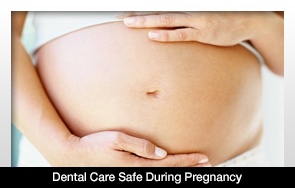'Recognition And Response In Child Protection' Course To Be Offered To Specialist Paediatric Dentists, UK
Main Category: Medical Students / TrainingAlso Included In: DentistryArticle Date: 15 Jul 2013 - 2:00 PDT
Current ratings for:
'Recognition And Response In Child Protection' Course To Be Offered To Specialist Paediatric Dentists, UK
| Patient / Public: |  |
|
| Healthcare Prof: |  |
1 (1 votes)
|
A child protection course highly regarded by paediatricians and A&E doctors is to be offered to specialist paediatric dentists in order to help them identify children at risk of abuse.
The nationally recognised Safeguarding Children: Recognition and Response in Child Protection (CPRR) course, run jointly by the Royal College of Paediatrics and Child Health (RCPCH), Advanced Life Support Group (ALSG), the British Society of Paediatric Dentistry (BSPD) and the NSPCC, will be expanded to include a 'dental stream'.
This stream will build on the knowledge specialist dentists already have in child protection and will further train them to recognise and respond to a range of indicators of possible abuse or neglect by looking at the child's general health as well as the mouth and teeth, so they can be confident both in their own practice and also when called on to advise general dental practitioners.
The course consists of:
- Online pre-course learning which is split into four sections:
- Comprehensive background information
- DVD with scenarios based on real-life cases, images with commentaries and interviews with professionals
- A copy of the Child Protection Companion - a resource compiled on behalf of the RCPCH by an expert group
- Additionally for the dental stream, a copy of Child Protection and the Dental Team - guidance specific for dental professionals
- One day face-to-face course: lectures, workshops and role play with specially developed dental scenarios
The course takes place at centres across the UK with highly experienced local paediatricians, nurses and specialist paediatric dentists facilitating.
Participants are required to pass an assessment to successfully complete the course.
Ben Cole, BSPD President and Consultant in Paediatric Dentistry at Newcastle Dental School and Hospital said:
"We know that dentists are in a good position to recognise signs of child maltreatment but it is not an area that any of us find easy. We welcome this opportunity to better train our future Specialists and Consultants in Paediatric Dentistry, who are often called upon to give advice on child protection to colleagues.
"Protecting children who are at risk of maltreatment requires health professionals to work together. We are hopeful that training together on this course will improve communication between doctors and dentists back in the workplace."
Lucy Williams, a participant in one of the first dental stream courses said:
"The course was invaluable in reinforcing the important role we have as paediatric dentists in protecting children from harm, leading our dental teams and working together with paediatricians and other key professionals."
Neela Shabde of the RCPCH, and the Consultant Paediatrician who chaired the working group for development of the original course in 2006, said: "I am delighted that the BSPD has played a key role in driving safeguarding training for dentists in conjunction with RCPCH, ALSG, and NSPCC.
"I believe this course will strengthen the skills and knowledge of the dental trainees in understanding the challenges and barriers, identifying child abuse and preventing children from suffering further abuse. Most importantly dentists treating children will be able to come forward as advocates in protecting children from abuse and work jointly with other agencies to safeguard children."
The dental stream of the CPRR course is currently only open to Paediatric Dentistry Trainees, either NTN or FTTA or GDC-registered Paediatric Dentistry Specialists.








